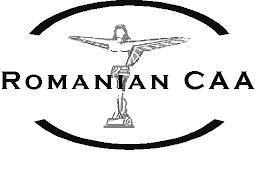Certification of aerodromes / heliports according to national legislation
The assessment and certification of civil aerodromes is performed by AACR in order to ascertain and certify the capacity of the aerodrome administrator and the personnel available to meet the technical, operational, flight safety and environmental protection requirements according to the internal aeronautical regulations in force and the agreements. or international conventions to which Romania is a party.
Aerodrome administrators must pursue compliance with the provisions of RACR-AD-PETA and / or RACR-AD-PETH applicable by those means of compliance, recommendations or guidance provided in these regulations having as reference ICAO documents, but also using specific guidance materials. To this end, aerodrome administrators must submit to the AACR together with the supporting documentation for the certification, the self-assessment of compliance with the standards and recommended practices according to the RACR-AD-PETA and / or RACR-AD-PETH in force.
Deviation from ICAO standards and acceptable means of compliance may be permitted only if the aerodrome administrators involved justify and argue unequivocally to AACR the need for the difference / deviation from the standard and / or best practices in question, obtaining, with the opinion AACR, approval from MT, issuer of RACR regulations.
Thus, for standards that are not complied with, until the date of the certification audit or extension / modification of the certificate, the aerodrome administrators will request and obtain, as the case may be, under the conditions provided above, the approval from MT for the deviation from non-compliant standards, which, after evaluation, will be specified by AACR in the Annex to the Certificate of Aerodrome.
The request for aerodrome certification, made in writing by the aerodrome administrators, must be supported by an analysis of the effects on the safety of operations and a plan of appropriate measures / actions to comply with the level of safety required by the applicable aeronautical regulations.
Accordingly, aerodrome administrators must take into account all the provisions of RACR-AD-PETA and / or RACR-AD-PETH and, depending on the particularities of the respective aerodromes (physical characteristics, types of operations and services, etc.), identify and implement all applicable recommendations. Under these conditions, the recommendations in question become certification criteria and should be treated as mandatory requirements.
forms:
* Application for national aerodrome certification - Annex 1 / PAC-AD-CADC
Purpose and organization of the national surveillance process
The civil aerodrome surveillance process aims to verify whether:
1. at least the existing conditions for granting the certification are maintained;
2. the specific requirements set out in the Annex to the certificate of aerodrome shall be complied with;
3. the requirements of the applicable civil aviation regulations regarding the safety, regularity and efficiency of aerodrome activities and air traffic, as well as the quality of the services provided, shall be observed.
Aerodrome surveillance shall be carried out throughout the period of validity of the certificate of aerodrome.
AACR performs the surveillance activity through periodic aerodrome inspections / audits.
The supervision planning cycle, the related supervision program, as well as its revision are established by the AACR according to the following elements:
1. findings / conclusions of previous audits;
2. identification of non-compliances with a major safety risk factor;
3. the occurrence of events with a negative impact on safety;
4. the response time of the aerodrome manager to implement the corrective action plan resulting from the previous audit.
The said monitoring process shall be conducted in accordance with AACR standards and procedures.
